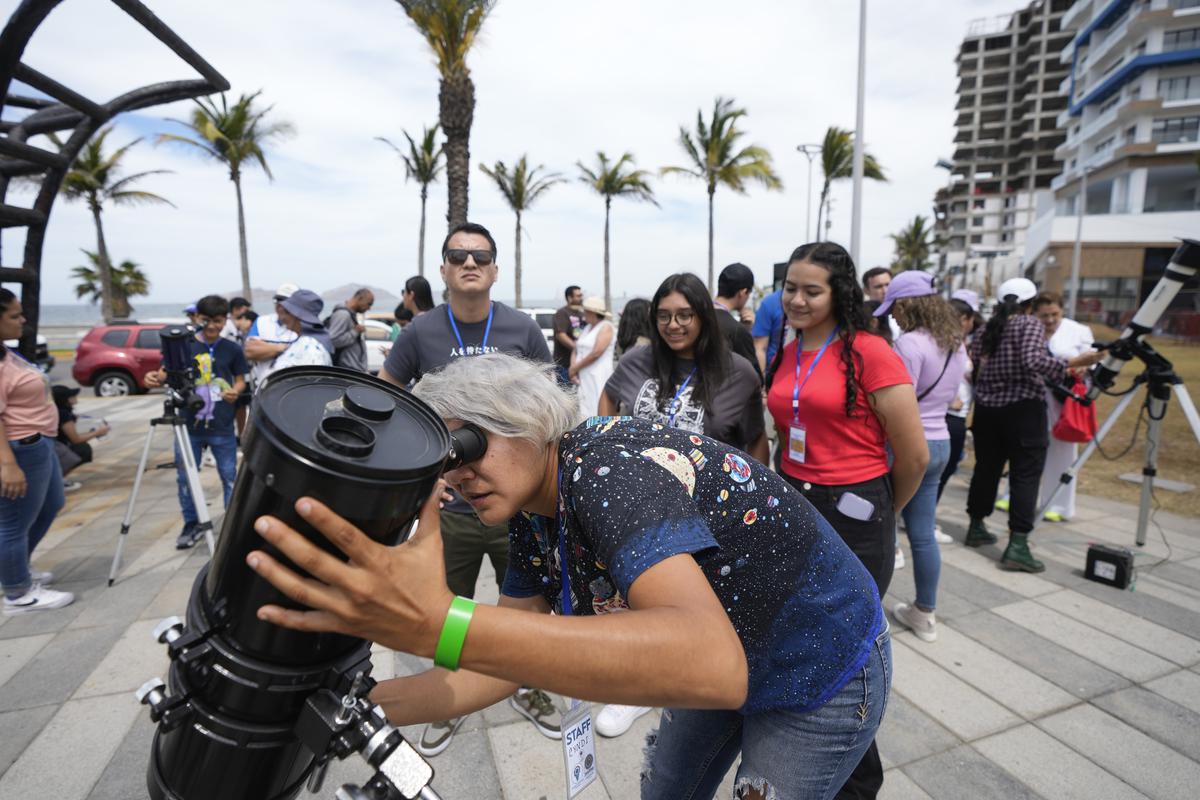Rare total solar eclipse to shadow North America today, check details here

[ad_1]
The moon covers the sun during a total solar eclipse in 2017.
| Photo Credit: AP
Eclipse spectators are staked out their spots across three countries as a rare total solar eclipse sweeps across North America on April 8.
What is a total solar eclipse?
In a total solar eclipse, the moon passes between the sun and Earth, entirely covering the face of the sun along a small path of our planet’s surface. This is called the “path of totality.” The daytime sky turns dark, akin to dusk or dawn, and nocturnal animals have been known to wake up, confused into believing night has arrived.
In places along the path of totality, people will be able to view the sun’s corona — the star’s outer atmosphere — that typically is not visible because of solar brightness. People observing from outside the path of totality will see a partial eclipse in which the moon obscures most of the sun’s face but not all of it.

An amateur antronomer prepares her telescophe a day before a total solar eclipse in Mazatlan, Mexico, on April 7, 2024.
| Photo Credit:
AP
When, where will it be visible?
According to NASA, the April 8 eclipse will begin over the South Pacific, with its path reaching Mexico’s Pacific coast at around 11:07 a.m. Pacific Time before entering the United States in Texas.
Though the eclipse won’t be visible in India, astronomy enthusiasts can follow it on NASA’s official live broadcast:
What can you expect to see during the eclipse?
A total solar eclipse unfolds in several distinct stages.
It starts with a partial eclipse phase as the moon begins to pass between Earth and the sun, partially blocking it and leaving the sun looking like it has a crescent shape.
In the subsequent Baily’s Beads phase, points of light from the sun shine around the moon’s edges because of the irregular lunar topography, producing small beads of light.
In the diamond ring phase, a single bright spot appears along the lunar edge even as the sun’s atmosphere leaves a ring of light around the moon. The effect resembles the appearance of a diamond ring. This phenomenon precedes totality.
After totality, the other phases repeat as the moon keeps moving along its path until the eclipse ends.
How do you safely view an eclipse?
Experts warn that it is unsafe to look directly at the bright sun without using specialized eye protection designed for solar viewing. Viewing an eclipse through a camera lens, binoculars or telescope without making use of a special-purpose solar filter can cause severe eye injury, according to these experts.
They advise using safe solar viewing glasses or a safe handheld solar viewer, noting that regular sunglasses are not safe for viewing the sun. The only moment it is considered safe for people to remove eye protection during a total solar eclipse is the brief time when the moon completely blocks the sun’s surface.
[ad_2]
Source link